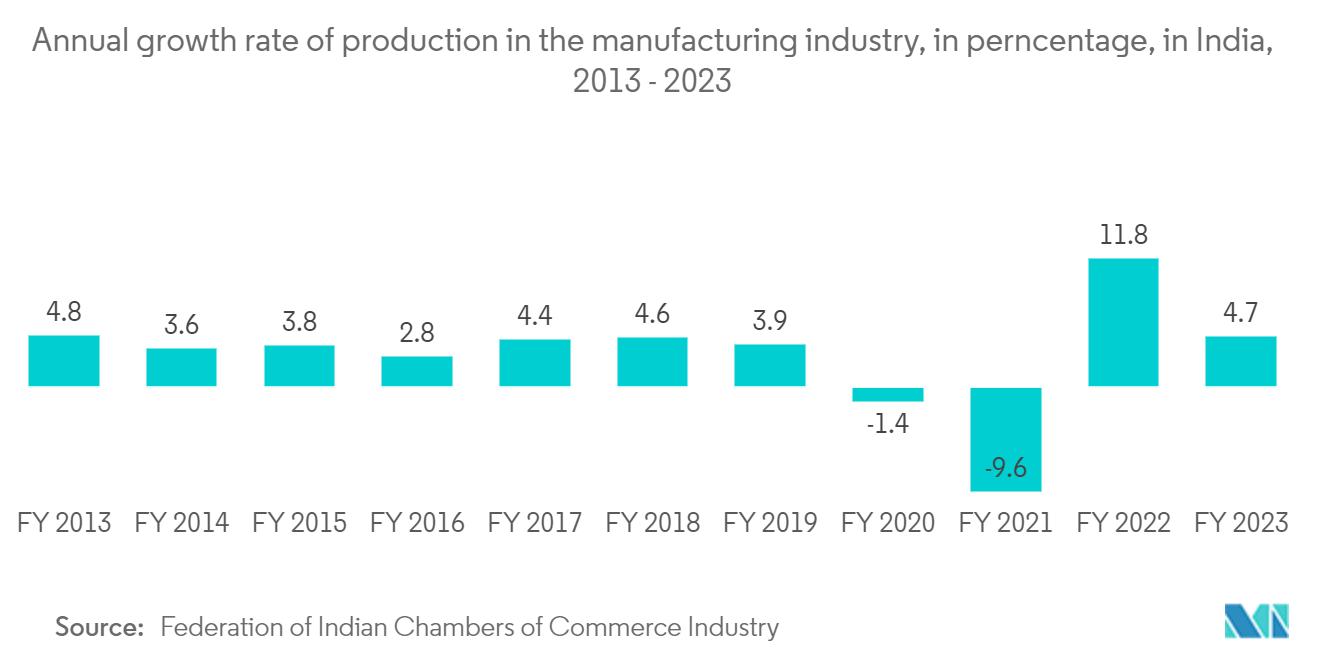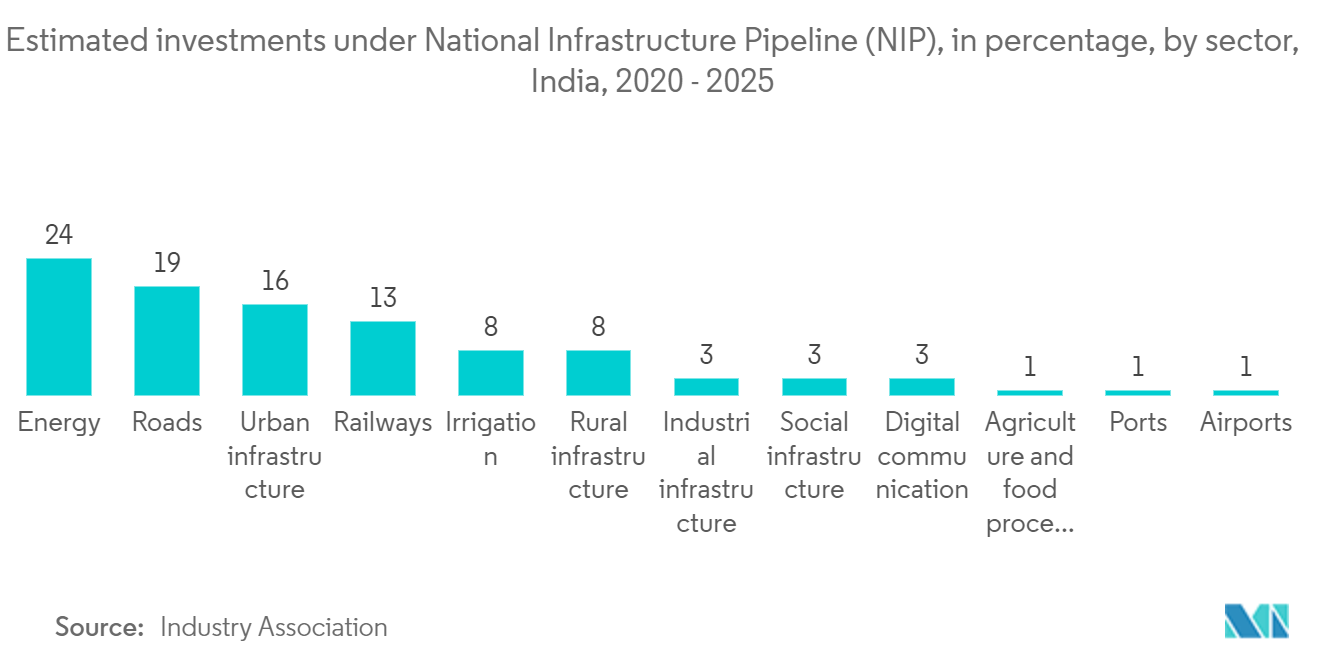Market Trends of India Metal Fabrication Industry
Manufacturing Sector is Shaping the Market
- The Indian metal fabrication sector is expected to be driven by the rising demand for goods and services in many sectors, as well as global manufacturing companies’ aim to diversify their production by setting up low-cost plants in countries like China and India. The Indian manufacturing sector is expected to register six times more growth than its current value by 2025, to USD 1 trillion. This growth in the manufacturing sector in India is likely to lead to more manufacturing facilities in the country, which is expected to increase demand in the market studied.
- Driven by growth in priority industries and favorable mega-strategies, the Indian manufacturing industry has expanded into new regions and market segments. Building on the advantages of a skilled labor force and low labor costs, the manufacturing industry is also benefitting from higher capital expenditure and increased mergers and acquisitions (M&A) activity, resulting in an increase in manufacturing output and, hence, an increase in export contribution.
- PLI scheme for large-scale electronics manufacturing in India has been notified. The aim of the scheme is to bring in large investments in mobile phone manufacturing as well as specified electronic components, including assembly, testing, marking, and packaging (ATMP). The ESDM industry in India has been supported by several initiatives, such as Make in India, Digital India, and Startup India, which have boosted the electronics system design and manufacturing industry in India.

Infrastructure Development Activities in India are Boosting the Market
- India is expected to become a developed country by 2047. However, it will do so by improving its infrastructure. Infrastructure is the foundation for living, working, and living in cities that are resilient to climate change and conducive to economic growth. To this end, the government has allocated 3.3 % of GDP in the budget year 2024 to the infrastructure sector, with a particular emphasis on transport and logistics.
- Roads and highways account for the largest share, followed by railways and urban public transport. The government has set ambitious objectives in the transport sector, such as the development of a 2-lakh-km national highway network by 2025 and increasing the number of airports to 220 by 2030.
- Twenty-three waterways will be operationalized by 2030, and 35 multi-modal logistics parks (MMLP) will be developed. The total budget of infrastructure-related Ministries increased from around INR 3.7 lakh crore in the year-earlier year (FY23) to around INR 5 lakh crore in FY24.
- The transport sector is preparing to face sustainability challenges, and the private sector is well-positioned to take advantage of the favorable policy environment to catalyze infrastructure investments. PPPs have played a crucial role in the private sector's involvement across infrastructure domains, particularly in the development of airports and ports, highways, and logistics parks across India.
- India needs a strong push from PPPs in addition to central government and state support across various schemes to reach its goal of a USD 5 trillion economy by 2025. Thus, infrastructure development activities in India can indeed have a significant impact on the metal fabrication industry. As infrastructure projects such as highways, bridges, railways, airports, ports, and urban development projects are undertaken, there is a heightened demand for various metal-fabricated products and structures.


